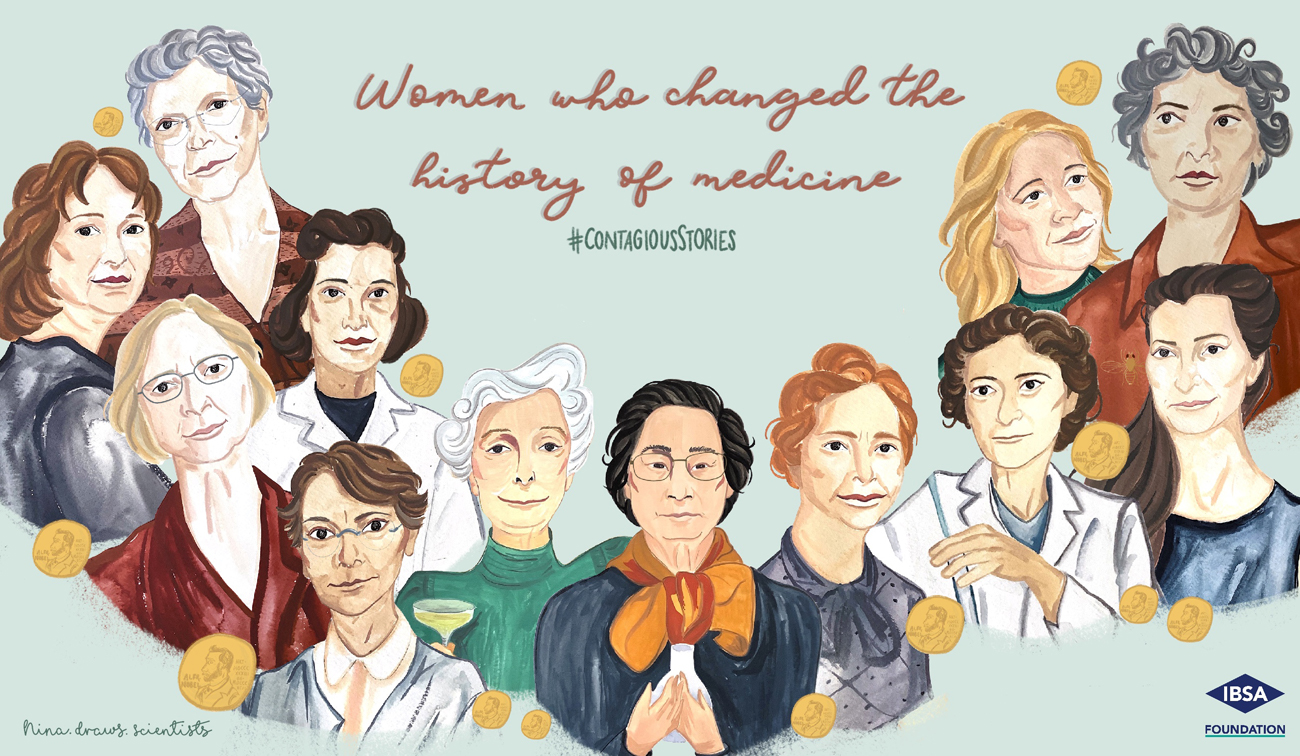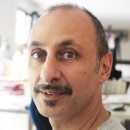Elizabeth, the explorer of cellular ageing
Elizabeth Blackburn won the 2009 Nobel Prize in Medicine, along with Carol Greider and Jack Szostak, for her research on cellular ageing and in particular on how chromosomes are protected by telomeres, our biological clocks.
Her work has added a new dimension to the understanding of cells and has prompted the development of potential new therapies.
Elizabeth’s story
The main influence that my parents’ work, both physicians, had on me was that it gave me the idea that women and men were equivalent in careers. It showed me that motherhood and career can go together. My mother worked part-time much of the time, as I was the second of seven children!
[Elizabeth H. Blackburn]
Elizabeth was born in Tasmania (Australia) in 1948. Growing up, she was fascinated by animals and also by the nobility of scientific research: she read and reread Marie Curie’s biography and, in late adolescence, it was clear to her that she wanted to become a scientist.
After being awarded her Bachelor’s and Master’s degrees in biochemistry from the University of Melbourne, Elizabeth left Australia at the age of 24 to do a PhD in Molecular Biology in Cambridge (UK). It was there that she met and fell in love with John Sedat.
Elizabeth and John got married in1975 and they moved to the United States. Since her husband was destined for Yale University, she looked for a place to do her post-doctorate work. She ended up in the laboratory of John Gall, who encouraged her to study Tetrahymena, single-cell organisms with ample linear chromosomes. “I knew she was extremely good”, said Gall, “but I didn’t know she as a superstar until she started doing her own independent work”.
At the end of 1977, Elizabeth moved to San Francisco with her husband. She tried to enter the academic world, but received a series of rejections, until Berkeley University finally offered her a position as assistant professor in the department of molecular biology.
In 1984, Elizabeth and her PhD student, Carol Greider, started to conduct experiments on cell structure. Together they discovered telomerase, an enzyme that lengthens each strand of DNA before the copying phase and that is responsible for compensating for the shortening that takes place during cell division. She became full professor at Berkeley in 1986 and her son, Benjamin David, was born in the same year.
In 1998 she was elected President of the American Society for Cell Biology. Two years later, Elizabeth was invited by the US government to join the President’s Committee on Bioethics. In 2004, she was removed from the panel, after she declared that she was in favor of using discarded embryos in in-vitro fertilization procedures for research purposes.
In 2008 she received the L’Oréal-UNESCO award for women in science, in recognition of her own career and for having started the career of many young female researchers.
In 2009 she won the Nobel Prize in Medicine.
Her personality
In addition to looking through the lens of the microscope, I also look out the window to see how science can be used to deal with problems.”
[Elizabeth H. Blackburn]
Elizabeth is open, pleasant and generous and often repeats that it is important to pursue joy and aesthetics in scientific research. In her opinion, each experiment should have the beauty and simplicity of a Mozart sonata.
Her meeting with another winner of the Nobel Prize in Medicine, Barbara McClintock, was fundamental to her learning:
Barbara McClintock gave me a memorable lesson: in a conversation I had with her in 1977, she urged me to trust my intuition. This advice was surprising to me then, because intuitive thinking was not something that at the time, I allowed myself to admit might be a valid aspect of being a biology researcher. Today, on the other hand, I think her advice recognizes an important and sometimes overlooked aspect of the intellectual processes that underlie scientific research, and for me it had a liberating aspect to it.
[Elizabeth H. Blackburn]
Over the years Elizabeth has evolved from a lab rat (as she jokingly describes herself) into an expert in the field of health and public policy.
She firmly believes that bioethics, supported by the best scientific evidence available, can play an important role for researchers dedicated to biological science and medicine.
Her research
Elizabeth identified the molecular structure of telomeres, clarifying several key aspects of cell division and DNA replication. As telomeres shorten, cells age. On the contrary, if telomerase activity is high, telomere length is maintained and cell ageing is delayed.
These findings have had a significant impact within the scientific community: many scientists have speculated that the shortening of telomeres could be the reason for ageing, not only in individual cells but also in the body as a whole.
Furthermore, with the contribution of the psychologist Elissa Epel, Elizabeth discovered that chronic stress shortens telomeres and plays a role in various diseases, including cardiovascular diseases in particular. The cure? Improve our lifestyles.
Health is the number of years of your life in which you are free from illness, are productive and enthusiastically enjoy life. Disease is the opposite, it is the time in your life spent feeling old, sick and dying.
[Elizabeth Blackburn]
Discover the other stories of the women who changed the history of medicine

 Nina Chhita is the artist and illustrator of the Instagram account @nina.draws.scientists, which focuses on contemporary and historical trailblazing scientists, who happen to be women. She initially started the account as a way to discover historical figures, and as a scientist herself, naturally gravitated towards scientists. Articles have since been written about Nina in the BBC news and Mental Floss. Her illustrations have appeared on the social media sites of the University of Oxford, the University of Bath, Dementias Platform UK, and in a YouTube video by Vanessa Hill. She lives in Vancouver where she works as a medical writer creating educational content for healthcare professionals.
Nina Chhita is the artist and illustrator of the Instagram account @nina.draws.scientists, which focuses on contemporary and historical trailblazing scientists, who happen to be women. She initially started the account as a way to discover historical figures, and as a scientist herself, naturally gravitated towards scientists. Articles have since been written about Nina in the BBC news and Mental Floss. Her illustrations have appeared on the social media sites of the University of Oxford, the University of Bath, Dementias Platform UK, and in a YouTube video by Vanessa Hill. She lives in Vancouver where she works as a medical writer creating educational content for healthcare professionals.

